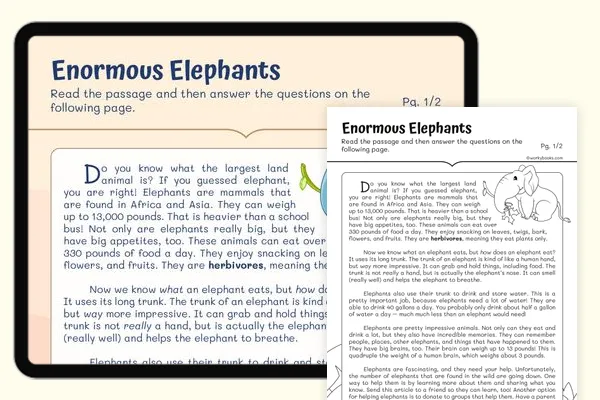Supporting Points in Informational Text Game
Eating vegetables is important for staying healthy. Vegetables contain vitamins that help you grow. They also give you energy to play and learn. What are two reasons the author gives for eating vegetables?
They taste good and are colorfulThey contain vitamins and give energyThey are easy to cook and cheapThey grow in gardens and farmsDogs make great pets. They are loyal friends who love to play with their owners. Dogs can also help protect your home by barking when strangers come near. What reasons does the author give for why dogs make great pets?
They are expensive and need trainingThey sleep a lot and eat dog foodThey are loyal and protectiveThey like to chase cats and birdsExercise helps kids stay healthy. When you exercise, your heart gets stronger. Exercise also helps you sleep better at night. How does the author support the idea that exercise is healthy?
It makes you tired and sweatyIt is fun to do with friendsIt takes a lot of timeIt strengthens your heart and improves sleepReading is an important skill. Reading helps you learn new words. It also helps you do better in all school subjects. What reasons support why reading is important?
It helps vocabulary and school performanceIt requires sitting quietlyIt uses paper and inkIt takes practice and timePolar bears are well-suited for cold weather. They have thick fur that keeps them warm. Their white fur helps them blend in with the snow. What reasons show how polar bears are suited for cold?
They live in groups and swimThey eat fish and sealsThey have thick fur and white coloringThey are big and strongTrees are important for our planet. They give us oxygen to breathe. Trees also provide homes for many animals. What evidence supports why trees are important?
They are tall and have leavesThey provide oxygen and animal homesThey grow slowly and need waterThey have branches and rootsWashing hands prevents illness. It removes germs that can make you sick. Hand washing also stops germs from spreading to others. How does the author support the importance of hand washing?
It uses soap and waterIt takes time and effortIt makes hands smell niceIt removes germs and prevents spreadThe library is a great place to visit. You can borrow books for free. The library also has quiet places to read and study. What reasons support why the library is great?
Free books and quiet study spacesIt has chairs and tablesIt is open during the dayIt has many shelvesRecycling helps our environment. It reduces waste in landfills. Recycling also saves resources like trees and water. What evidence shows how recycling helps?
It takes time and effortIt requires sorting itemsIt reduces waste and saves resourcesIt needs special binsHelmets keep bike riders safe. They protect your head if you fall. Helmets can prevent serious injuries. What reasons support wearing a helmet?
They come in different colorsThey protect heads and prevent injuriesThey are required by rulesThey fit on your headABOUT SUPPORTING POINTS IN INFORMATIONAL TEXT GAME
This engaging digital activity helps second grade students develop critical reading skills by identifying how authors use reasons to support their main points in informational texts. Through carefully crafted multiple-choice questions, students practice analyzing text evidence and understanding the relationship between claims and supporting details.
LEARNING OUTCOMES
Students will:
- Identify specific reasons that support an author's main points
- Analyze how supporting details connect to the author's message
- Recognize the relationship between evidence and claims in informational text
- Build critical thinking skills through text analysis
Tags
reading comprehension, informational text, supporting details, author's reasons, text evidence, main idea, critical thinking, digital learning, interactive assessment, grade 2 reading




















